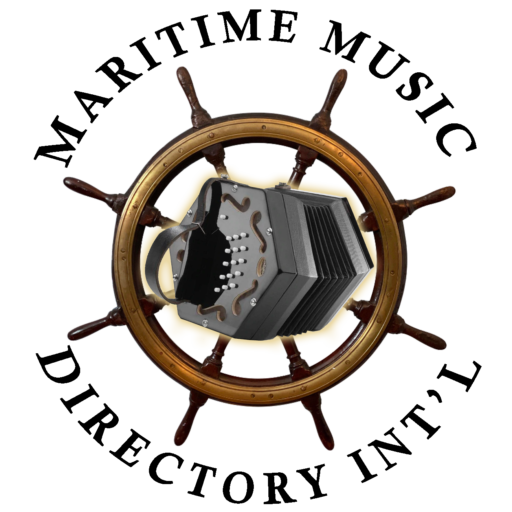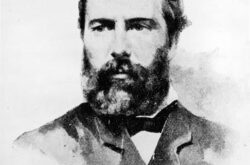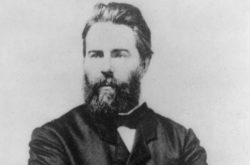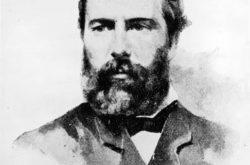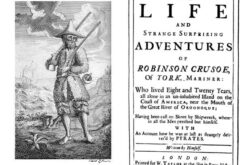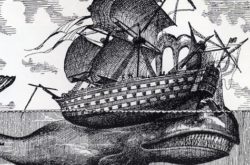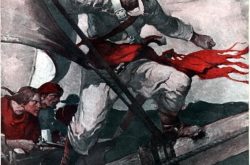Herman Melville sails for the South Seas (3 Jan, 1841)
On January 3, 1841, Herman Melville ships out on the whaler Acushnet to the South Seas. Melville was born in New York City in 1819. A childhood bout of scarlet fever permanently weakened his eyesight. He went to sea at age 19, as a cabin boy on a ship bound for Liverpool. Two years later, he sailed for the South Seas. The Acushnet anchored in Polynesia, where Melville took part in a mutiny. He was thrown in jail in Tahiti, escaped, and wandered around the South Sea islands for two years. In 1846, he published his first novel, Typee, based on his Polynesian adventures. His second book, Omoo (1847), also dealt with the region. The two novels were popular successes, although his third, Mardi Moby-Dick. The book flopped and was not recognized as a classic for many years. Read the complete article on History.com.
Moby Dick First Published (1851)
Moby-Dick is now considered a great classic of American literature and contains one of the most famous opening lines in fiction: “Call me Ishmael.” Initially, though, the book about Captain Ahab and his quest to catch a giant white whale was a flop. Its author, Herman Melville was born in New York City in 1819. As a young man, he spent time in the merchant marines, the U.S. Navy and on a whaling ship in the South Seas. In 1846, he published his first novel, Typee, a romantic adventure based on his experiences in Polynesia. The book was a success and a sequel, Omoo, was published in 1847. Three more novels followed, with mixed critical and commercial results. Melville’s sixth book, Moby-Dick, was first published in October 1851 in London, in three volumes titled The Whale, and then in the U.S. a month later. Melville had promised his publisher an adventure story similar to his popular earlier works, but instead, Moby-Dick was a tragic epic, influenced in part by Melville’s friend and Pittsfield, Massachusetts, neighbor, Nathaniel Hawthorne, whose novels include The Scarlet Letter. Read the complete article on History.com.
Moby Dick First Published (14 Nov 1851)
Moby-Dick is now considered a great classic of American literature and contains one of the most famous opening lines in fiction: “Call me Ishmael.” Initially, though, the book about Captain Ahab and his quest to catch a giant white whale was a flop. Its author, Herman Melville was born in New York City in 1819. As a young man, he spent time in the merchant marines, the U.S. Navy and on a whaling ship in the South Seas. In 1846, he published his first novel, Typee, a romantic adventure based on his experiences in Polynesia. The book was a success and a sequel, Omoo, was published in 1847. Three more novels followed, with mixed critical and commercial results. Melville’s sixth book, Moby-Dick, was first published in October 1851 in London, in three volumes titled The Whale, and then in the U.S. a month later. Melville had promised his publisher an adventure story similar to his popular earlier works, but instead, Moby-Dick was a tragic epic, influenced in part by Melville’s friend and Pittsfield, Massachusetts, neighbor, Nathaniel Hawthorne, whose novels include The Scarlet Letter. Read the complete article in History.com.
“Robinson Crusoe” is published 1719
Daniel Defoe’s fictional work The Life and Strange Adventures of Robinson Crusoe is published. The book, about a shipwrecked sailor who spends 28 years on a deserted island, is based on the experiences of shipwreck victims and of Alexander Selkirk, a Scottish sailor who spent four years on a small island off the coast of South America in the early 1700s. Read the full story on History.com.
Whaleship Essex Sunk by Sperm Whale (20 Nov 1820)
The American whaler Essex, which hailed from Nantucket, Massachusetts, is attacked by an 80-ton sperm whale 2,000 miles from the western coast of South America. The 238-ton Essex was in pursuit of sperm whales, specifically the precious oil and bone that could be derived from them, when an enraged bull whale rammed the ship twice and capsized the vessel. The 20 crew members escaped in three open boats, but only five of the men survived the harrowing 83-day journey to the coastal waters of South America, where they were picked up by other ships. Most of the crew resorted to cannibalism during the long journey, and at one point men on one of the long boats drew straws to determine which of the men would be shot in order to provide sustenance for the others. Three other men who had been left on a desolate Pacific island were saved later. The first capture of a sperm whale by an American vessel was in 1711, marking the birth of an important American industry that commanded a fleet of more than 700 ships by the mid 18th century. Herman Melville’s classic novel Moby Dick (1851) was inspired in part by the story of the Essex. Read the complete article in History.com. Here is another article on the subject.
Thursday’s 20 July Seminar: Rebels at Sea: Privateering in the American Revolution with Eric Jay Dolin
The NMHS Seminar Series Presents Rebels at Sea: Privateering in the American Revolutionwith Best Selling Author Eric Jay Dolin Just chosen as a finalist for the 2023 book award for nonfiction by the New England Society of New York This Thursday, 20 July 2023 Join us in person or watch on Facebook Live Welcome & Refreshments at 6:30 PM EST; Lecture at 7:00 PM EST, Q&A to Follow Seminars are free to attend, although we hope you will support the Series with a suggested $10 Seminar Guest donation. Pre-register to Join Us in Person Watch on Facebook Live $10 Seminar Guest Donation Buy the Book Please note that the National Maritime Historical Society is not affiliated with the Maritime Music Directory International.
